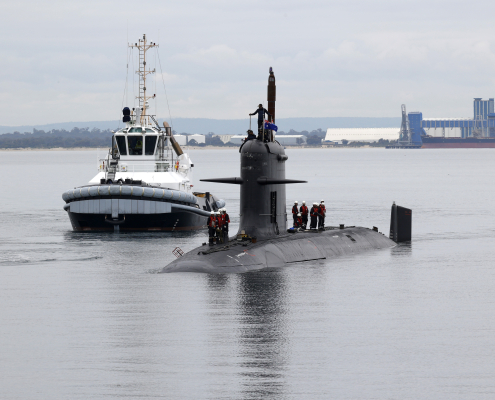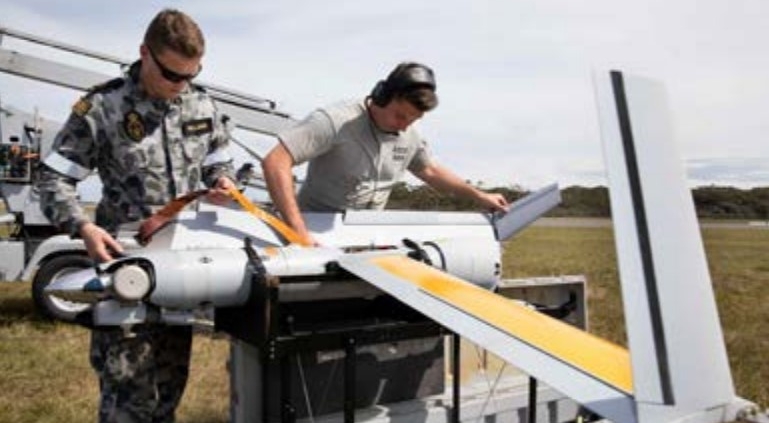Undersea, Offshore and Littoral Science and Engineering
Scientific and technical expertise and innovative technologies to enhance the operational performance and survivability of defence platforms and activities in the maritime domain, particularly in and around the Indian Ocean. UWA has experts working together across many disciplines including marine science, littoral/coastal engineering, oceanography, deep-sea science, ocean engineering, offshore geotechnical engineering and environmental management.
Capabilities and UWA Competitive Advantage
UWA has defence related research capability across the undersea, offshore and littoral domains. Examples within each domain include:
Undersea
- Capability in observing, modelling and understanding the fine-scale ocean variability that affects undersea navigation and sound propagation, including realistic non-linear internal wave modelling tools relevant to submarine navigation and communication.
- Statistical tools for quantifying uncertainty from ocean observations and numerical models that allow the development of operational decision-making tools.
- Marine electronics/power systems for naval vessels including surface and undersea (submarine).
Offshore
- Application of novel methods and sensing capabilities to understand and predict the dynamic response of marine craft and floating systems, and their survivability, in mild to extreme conditions.
- Optimisation of the design of marine craft including quantifying the hydrodynamic forces on subsea vehicles in a range of environmental flow conditions using model scale testing and/or Computational Fluid Dynamics.
- Offshore geotechnics including optimising the stability of subsea infrastructure and the design of novel anchoring solutions.
- Ability to document and map the deepest parts of the ocean.
Littoral
- Detailed numerical modelling capabilities of waves, currents and sediment transport in nearshore and littoral areas relevant to defence operations.
- Development of novel techniques for the measurement waves, currents and nearshore bathymetry from in situ instrumentation and remote sensing platforms.
- Marine renewable energy (wind, tidal, wave), including resource assessment, energy capture optimisation and distribution.
Key Contacts
Dr Jeff Hansen, Associate Professor, School of Earth Science and UWA Oceans Institute
Phone: +61 8 6488 3724
Email: jeff.hansen@uwa.edu.au
Professor Nicole Jones, Ocean Graduate School
Phone: +61 8 6488 3074
Email: nicole.jones@uwa.edu.au
Outcomes and Impact
- Development and operationalisation of a Machine Learning system that improves the accuracy of numerical wave forecasts. This system is currently running operationally to improve port operations in Australia’s northwest.
- Development of nonlinear internal wave prediction tools to inform operation of offshore assets.
- Development and operationalisation of a hybrid physics and Machine Learning system to predict vessel and floating platform motions. This system is currently running operationally to inform offshore operations.
Facilities
- One of Australia’s largest pools of oceanographic field research equipment that can be deployed from the littoral zone to full ocean depths, including in situ instrumentation, remote sensing platforms, and bioacoustic equipment.
- IMOS Ocean Glider Facility that operates a fleet of autonomous, underwater ocean gliders to make oceanographic measurements.
- Minderoo-UWA Deep-Sea Research Centre that develops and deploys full ocean depth rated (benthic) imaging landers, cameras, oceanographic sensors and sampling equipment and other state-of-the-art deep sea exploration vehicles.
- The Coastal and Offshore Research Laboratory, which includes a 54 m long wave flume and the UWA ‘O-tube’ facility, which is a unique large scale recirculating flume test facility simulating underwater wave and current conditions.
- National Geotechnical Centrifuge Facility operates the only geotechnical centrifuges in Australia developing a wide range of onshore and offshore geotechnical solutions.
- Waterman’s Bay Research Facility: laboratory for marine research with state-of-the-art laboratories and pumped seawater.



